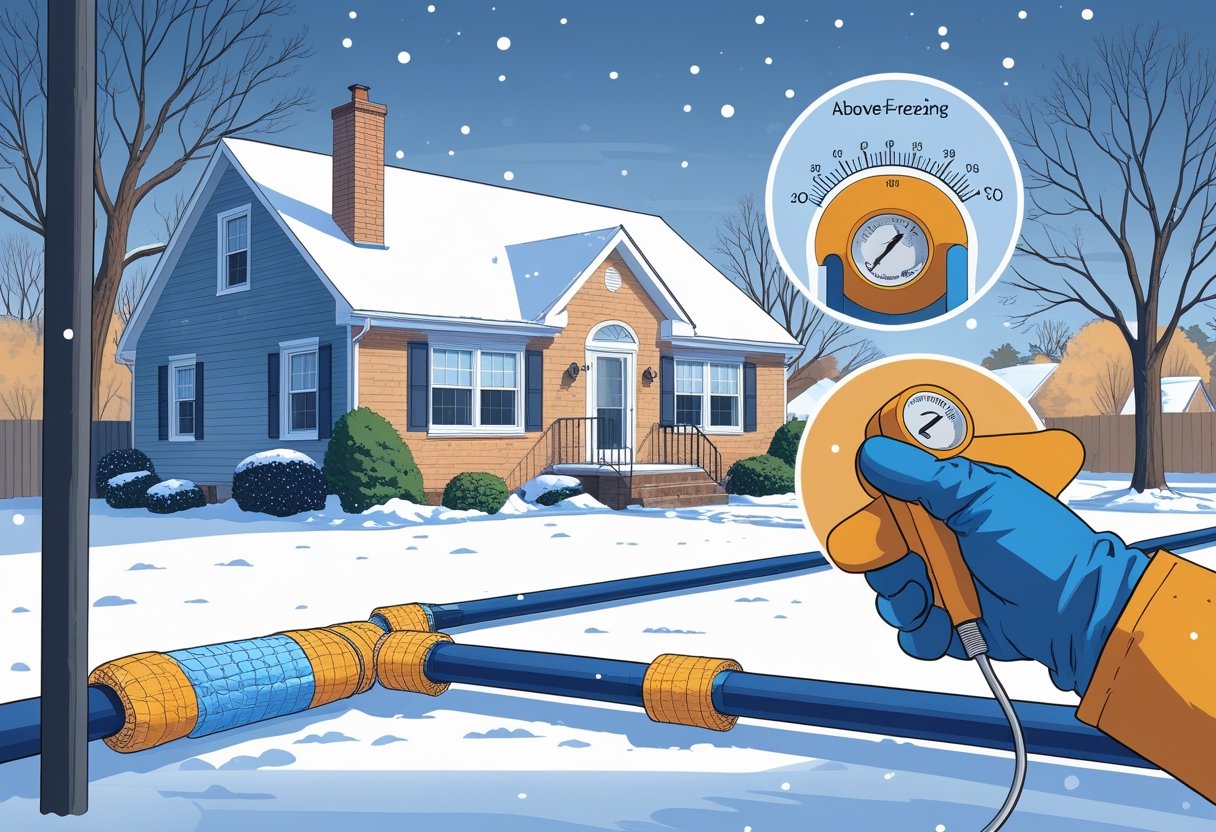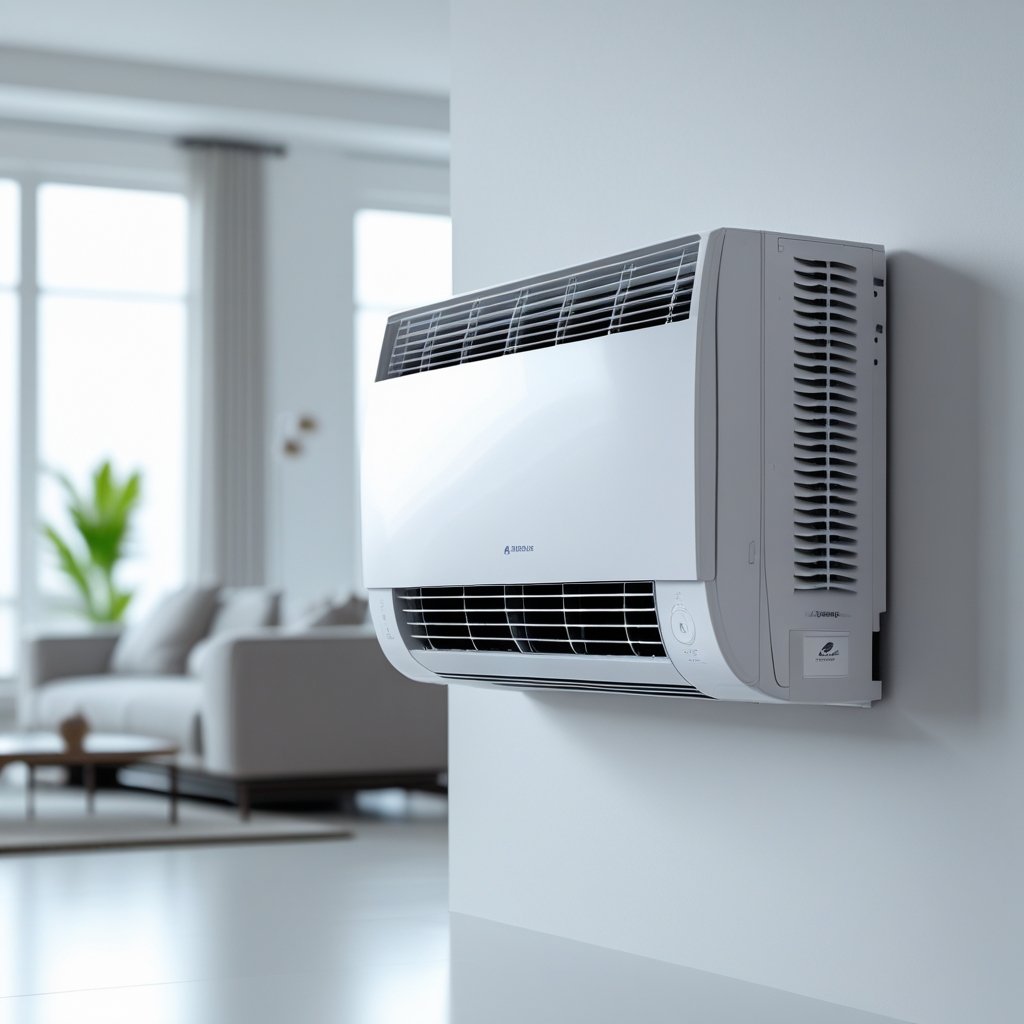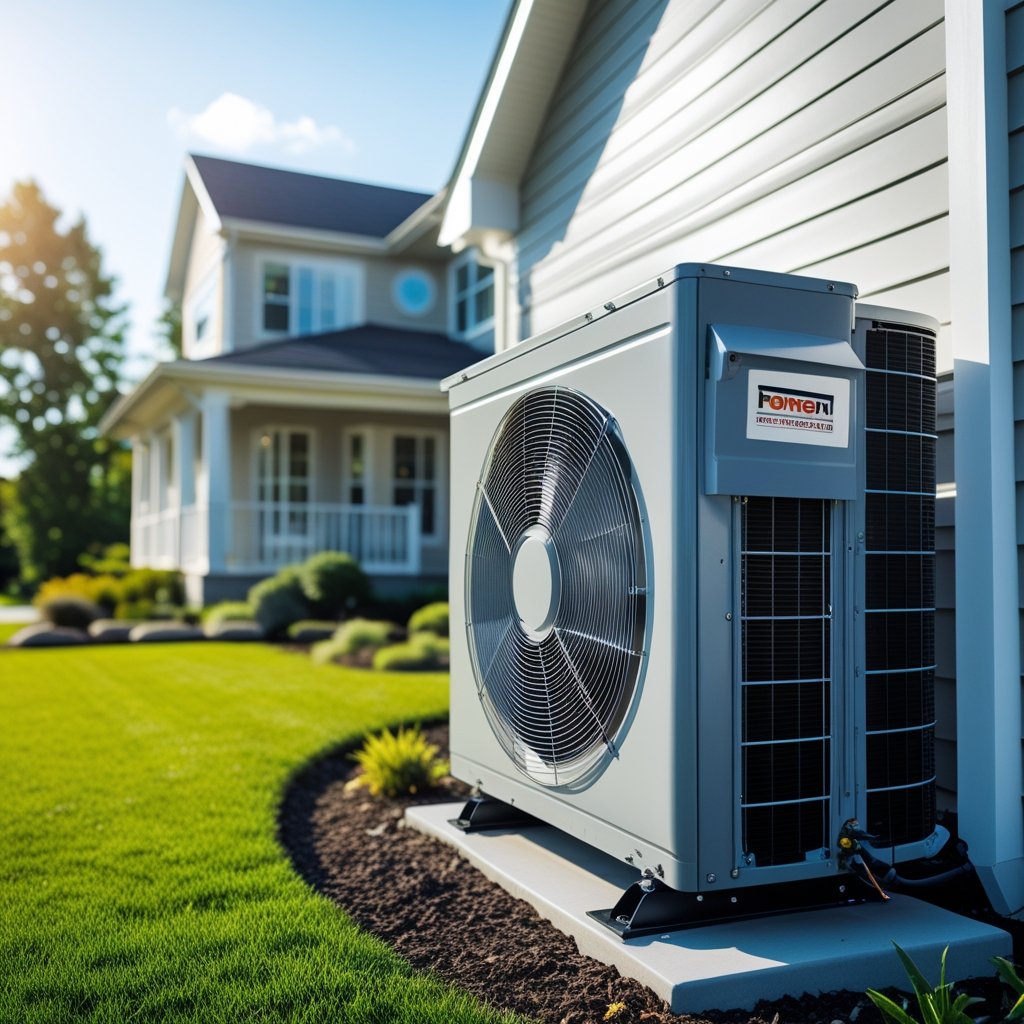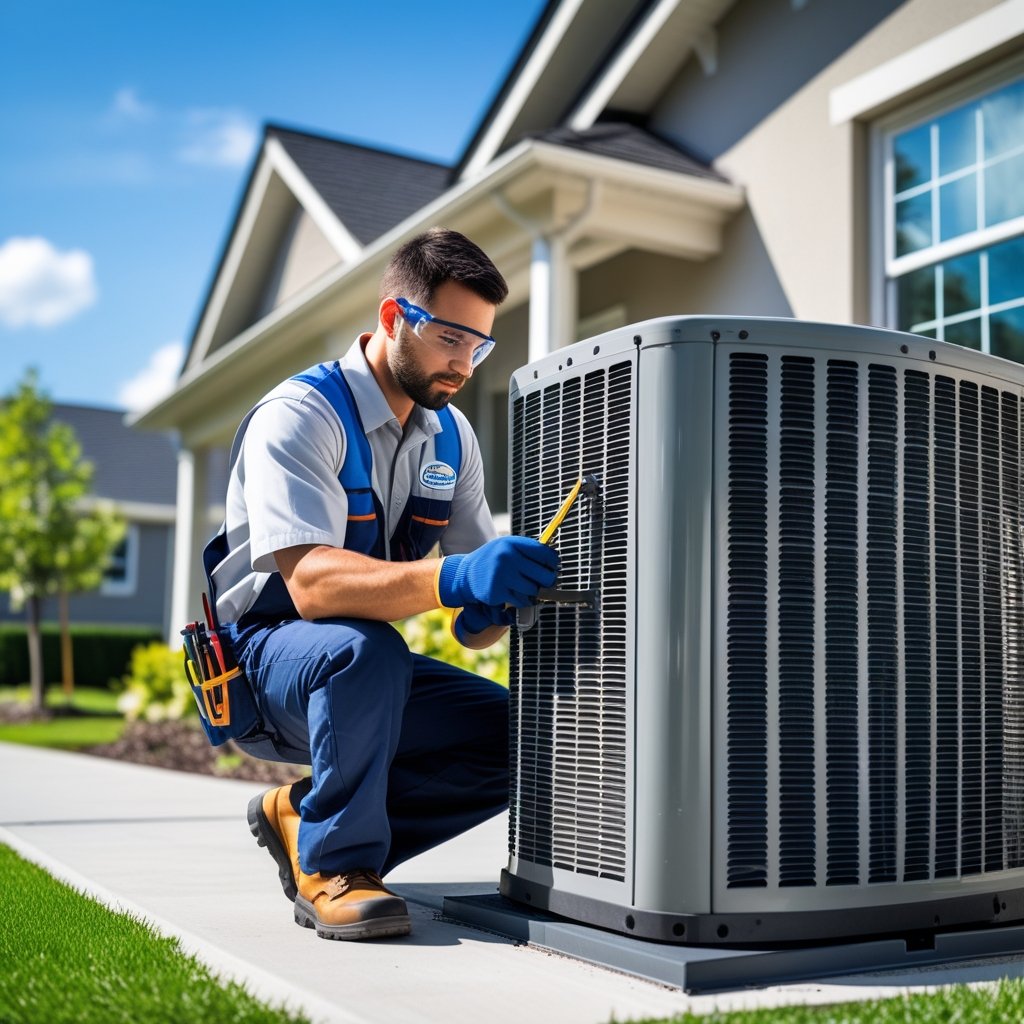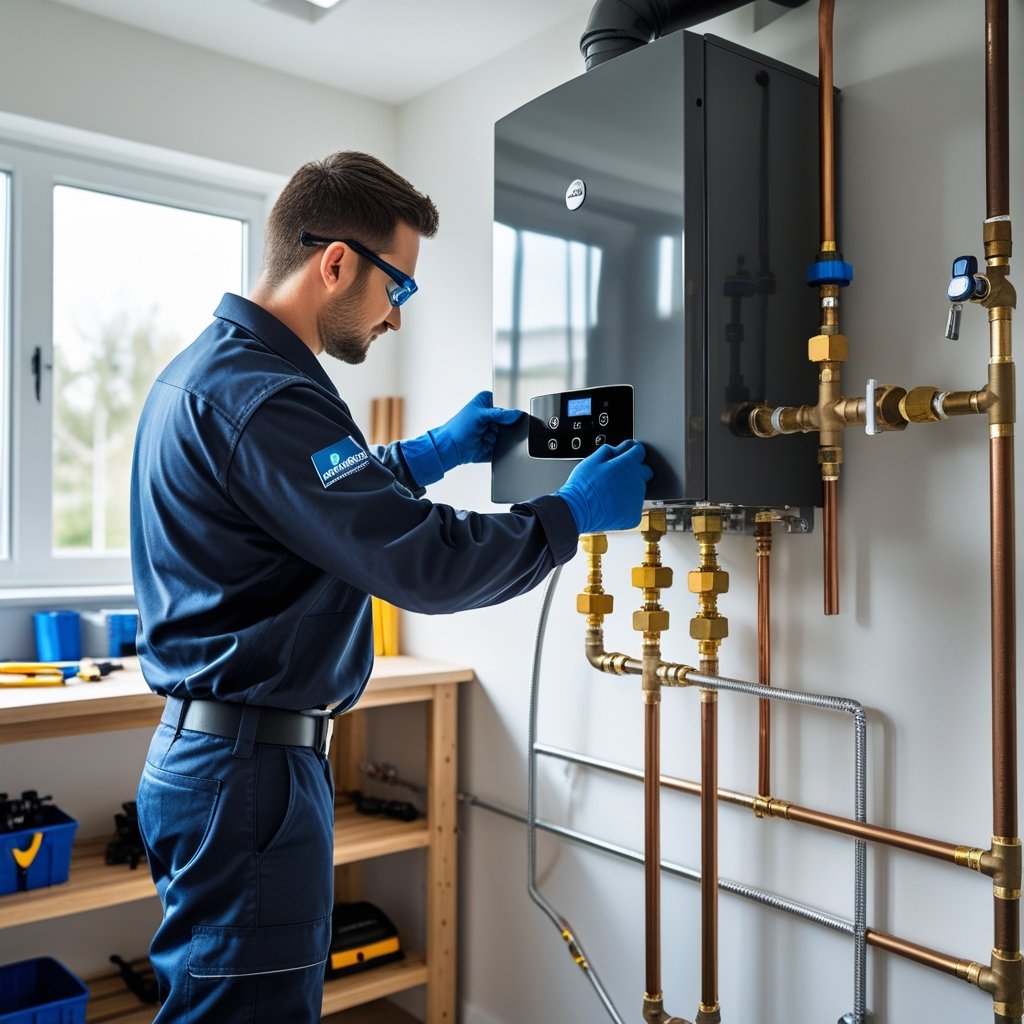When freezing winter nights hit South Central Pennsylvania, frozen pipes can sneak up on you, causing headaches and expensive repairs. The best way to prevent frozen pipes is to insulate your home’s plumbing and keep steady heat in the spots that need it most. This isn’t rocket science, but it works—and it might just save you a fortune.
If you’re in Lancaster, Harrisburg, or York, you’ve probably felt those bitter cold snaps. Leo Kob Co. has been helping folks here protect their pipes since 1904, focusing on straightforward preventive care so your plumbing stays safe when the temperature drops.
With a few smart moves—sealing up drafts, insulating pipes, and watching those outdoor lines—you can dodge the stress of frozen water lines. Let’s get into some practical tips to keep your pipes safe and your home cozy this winter.
Understanding Frozen Pipes in Pennsylvania
Pipes freeze when water inside them turns solid and expands. That’s when the real trouble starts—cracks, leaks, sometimes even a burst pipe if you don’t catch it in time. If you know why pipes freeze and what makes Pennsylvania’s winters so tough, you can stay a step ahead.
Common Causes of Frozen Pipes
Pipes are most likely to freeze when they’re exposed to cold air and don’t have enough insulation. Unheated basements, crawl spaces, and attics are classic problem areas.
Drafty windows and doors let in icy air, raising the odds. Water sitting still in pipes (especially overnight or during a cold snap) is also more likely to freeze.
Older plumbing or pipes tucked into exterior walls just makes things worse. If you fix drafts and keep water moving, you’re already way ahead.
Risks and Consequences for Homeowners
When pipes freeze and burst, water can quickly ruin floors, walls, and furniture. It’s a mess—one that’s expensive to fix.
You might also lose water access, which is no joke in winter. Pipe repairs can take time and disrupt your routine.
Worst case? Water damage leads to mold, and that’s a health hazard you don’t want. A bit of prevention now can spare you a lot of stress later.
How Pennsylvania’s Climate Affects Pipes
Pennsylvania winters can drag on, especially in South Central PA, where temperatures dip below freezing for days at a time. Snow and ice pile up, chilling your home’s exterior walls even more.
Rapid swings from warm days to freezing nights make things tricky, putting extra strain on pipes. Old houses without solid insulation or updated heating are especially at risk—Lancaster, Harrisburg, and York have plenty of those.
Local experts like Leo Kob Co. really get these challenges and can help you prep your plumbing for the worst of winter.
Identifying Vulnerable Pipes
Knowing which pipes are most at risk lets you focus where it matters. Pipes in certain places, made from certain materials, or part of older plumbing systems, are more likely to freeze and burst during a harsh Pennsylvania winter.
Typical Locations for Freezing
Pipes near exterior walls, especially in unheated spots like basements, crawl spaces, and attics, are trouble. Check under sinks on outside walls and pipes running through garages or porches.
Outdoor spigots and irrigation lines freeze easily if you don’t drain or insulate them. Pipes close to drafty windows or poorly insulated walls are also high risk. Metal pipes in cold areas? Watch those closely.
Assessing Your Plumbing System
Take a good look at all the pipes you can see. Pay extra attention to spots exposed to cold air or drafts from windows, doors, or vents. If you find gaps in insulation or missing covers on crawl spaces, that’s a red flag.
Older homes in South Central PA often have plumbing that just isn’t up to modern winter standards. If you’re not sure what to look for, Leo Kob Co. recommends a professional inspection. A pro can spot hidden trouble and suggest the right fixes.
Pipe Materials and Risk Levels
Copper and steel pipes chill fast—metal just sucks up the cold. Plastic pipes like PEX and CPVC handle freezing a bit better, but if water inside freezes and expands, even those can burst.
Don’t bet everything on pipe material. Insulation and heat matter for all types. Prioritize exposed metal pipes, especially in chilly spots. Insulation sleeves or heat cables can make a big difference without a huge remodel.
Effective Prevention Strategies for Pennsylvania Homes
To keep pipes from freezing, you’ve got to keep them warm and shield them from drafts. Insulate, seal up leaks, and add heat where you need it. Each step chips away at your risk for winter water disasters.
Insulation Techniques for Exposed Pipes
Pipes in basements, attics, or crawl spaces are sitting ducks for freezing. Wrap them with foam insulation sleeves or heat tape—don’t leave any joints or odd corners uncovered.
Fiberglass insulation with a vapor barrier is an extra layer of defense if you want to go all out.
It’s smart to check insulation every year for cracks or gaps. Good insulation slows heat loss and helps keep water moving.
If you’ve got pipes running along exterior walls, beef up the wall insulation too. Leo Kob Co. can help with this if you want it done right.
Sealing Drafts and Openings
Cold air sneaking in through cracks near pipes is a recipe for trouble. Walk around and check windows, doors, vents, and where pipes come into the house.
Weatherstripping or caulk works for small gaps. For bigger holes, grab some expanding foam.
Don’t forget attics and basements—cold air loves to hide out there. Even tiny cracks can drop the temperature fast around pipes. Sealing them up is cheap and really effective.
Heating Solutions for Cold Areas
Sometimes, even with insulation and draft sealing, it’s just too cold. Space heaters or heat lamps can help, but you’ve got to use them safely and never leave them unattended.
A safer bet? Low-wattage heat cables that wrap around pipes and kick on when it gets cold. For bigger spaces like crawl spaces, a small electric heater on a thermostat can do the trick.
If you’re not sure what’s best, have Leo Kob Co. come by—they’ll make sure your setup is safe and effective.
Seasonal Maintenance and Preparation
Getting ready before and during winter is the best way to keep pipes safe in Pennsylvania. This means looking after outdoor faucets, prepping homes you won’t be using, and keeping an eye on things during the coldest weather.
Winterizing Outdoor Faucets
Outdoor faucets are notorious for freezing up. Before winter, turn off the water supply to exterior taps from inside.
Drain any leftover water by opening the faucet all the way. Take off hoses and stash them indoors. An insulated cover over the faucet adds another layer of protection.
Not sure how to shut off or drain the lines? Leo Kob Co. can help and make sure it’s done right.
Preparing Unoccupied Properties
Leaving a place empty in winter? Shut off the main water supply and drain the pipes completely. Use compressed air if you need to clear out stubborn water.
Keep the heat on low—about 55°F—to keep things from freezing. Leave cabinet doors open under sinks so warm air can get in.
Try to check in regularly, or hire a local service like Leo Kob Co. to keep an eye on things.
Routine Checks During Cold Snaps
When the temperature plummets, your pipes are in the danger zone. Check exposed pipes in basements, crawl spaces, and attics often.
Look for frost or cracks. Let faucets drip a little; moving water is less likely to freeze.
Open interior doors so warm air can circulate. Insulate any exposed pipes with foam or insulation tape. If you spot problems early, you’ll save yourself a lot of grief.
Emergency Steps if Pipes Begin to Freeze
If you think your pipes are freezing, don’t wait. Quick moves can save you big time. Spotting the signs and knowing what to do can make all the difference.
Recognizing Early Warning Signs
If water slows down or stops coming from faucets, pay attention. Frost or condensation on pipes, or cold spots on walls, can be clues.
Weird noises—banging or whistling—might mean ice is blocking the pipes.
Cracks or bulges in pipes? That’s serious. Shut off your main water valve right away.
Immediate DIY Actions to Take
Open cabinet doors under sinks to get warm air to the pipes. Keep your thermostat at 55°F or higher, even if you’re out.
Set up a space heater or heat lamp near frozen pipes, but use caution. Wrapping pipes with towels soaked in warm water can help thaw them gently.
Never try to thaw pipes with an open flame—seriously, just don’t. Keep a bucket nearby in case things start to melt.
When to Call a Professional Plumber
Can’t find or fix the frozen section? Call a plumber right away. If water flow doesn’t come back after your efforts, ice might still be blocking things.
Cracked or burst pipes need urgent repairs to stop water damage. Pros have the right tools, like pipe thawing machines, to handle it safely.
Leo Kob Co. has been at this since 1904. If you need emergency plumbing, they’ll get you sorted fast.
Choosing the Right Pipe Insulation Products
Picking pipe insulation is about finding the sweet spot between cost, ease, and real protection. How you install it matters just as much as what you pick—otherwise, you’re not really protected from Pennsylvania’s deep freeze.
Comparing Types of Pipe Insulation
There are a few main types. Foam tubing is super popular—it’s cheap, easy to put on, and does a good job.
Fiberglass works well for bigger pipes and resists cold, but you’ll need to wrap it tight and maybe add a vapor barrier to avoid moisture.
Rubber insulation is flexible and tough, handling temperature swings without cracking. It’s pricier, but for outdoor pipes, it’s a solid choice.
Here’s a quick look:
TypeBenefitsDrawbacksFoamEasy to install, cheapNot great outdoorsFiberglassStrong cold resistanceNeeds vapor barrierRubberFlexible, durableCosts more
Installation Best Practices
You want your insulation to actually work, right? Start with clean, dry pipes. Dirt or moisture can mess things up.
Cut insulation to fit snugly—no gaps. Seal seams with weatherproof tape or clamps. Don’t ignore joints or bends; cold air loves to sneak in there.
For outdoor pipes, add a protective cover or wrap insulation with plastic to keep out rain and snow.
Leo Kob Co. suggests checking insulation yearly for damage. Fixing small issues early is way cheaper than a big repair later.
Long-Term Solutions for Preventing Frozen Pipes
If you want lasting protection, sometimes you need to make real changes—especially in older homes or if you’re already planning renovations.
Retrofitting Older Homes
Older homes often have pipes in drafty, poorly insulated spots. You can add insulation around pipes in basements, crawl spaces, and attics—foam sleeves or fiberglass wrap both work well.
Seal up gaps around windows, doors, and walls near plumbing to keep cold air away. Heat tape, an electric heating cable, is another option for pipes that just won’t stay warm.
A local pro like Leo Kob Co. can spot the trouble spots and recommend smart upgrades that don’t require a full remodel.
Upgrading to Freeze-Resistant Plumbing
If you’re redoing plumbing, go for materials that handle the cold better. Plastic pipes like PEX are flexible and much less likely to burst than old metal pipes.
You can also move exposed pipes into heated areas of your house, especially during bigger remodels. Building in insulation from the start cuts your risk every winter.
Leo Kob Co. helps South Central PA homeowners swap out old plumbing for modern, freeze-resistant options. It’s a solid investment for peace of mind and fewer surprises down the road.
Cost Considerations and Energy Savings
Preventing frozen pipes really does save you money over time. Fixing burst pipes? That’s usually way pricier than just adding some insulation or sealing up leaks in the first place.
Sure, pipe insulation or heat tape costs a bit upfront. But honestly, these steps can save you a lot of hassle and cash when Pennsylvania winters hit hard.
Here’s a quick look at what you might spend and what you’ll get back:
ItemApproximate CostBenefitPipe insulation$1 - $3 per footCuts freezing risk, helps with energy lossHeat tape$20 - $50 per 10 feetKeeps pipes warm when it’s brutally coldProfessional inspection$75 - $150Spots weak areas early, helps you avoid big repairs
Insulating pipes can also lower your heating bills. If your pipes keep heat better, your home just stays warmer without cranking up the thermostat.
At Leo Kob Co., we’re all about giving honest advice on these options. We want to keep your system running, not push you into buying stuff you don’t need.
A maintenance plan can cut your risks and save money over time too. Think of it as a way to keep your plumbing safe long before the snow even starts.
Leo Kob Co. has been helping folks in South Central Pennsylvania since 1904. We get the local weather—and we know how to protect your home without tacking on extra costs or headaches.
Local Pennsylvania Resources and Support
Living in Pennsylvania means you’ve got some good local help for preventing frozen pipes. Lots of towns and counties hand out free or cheap winter prep guides, usually packed with tips for insulating pipes and shutting off outdoor faucets.
If you want hands-on help, local plumbing and HVAC pros are just a call away. Leo Kob Co. has proudly served South Central Pennsylvania since 1904, offering expert plumbing maintenance to help keep your home safe from freeze-ups.
Local resources often include:
- Free brochures on winterizing your home
- Emergency repair contacts for quick fixes
- Winter weather alerts to keep you in the loop
Your city or county website probably lists programs for home winterization—sometimes with rebates or discounts. It’s worth checking out what’s available in your area.
Leo Kob Co. has a reputation for honest pricing and quality service. If you want someone to actually look at your plumbing system and give you real advice, their techs are happy to help.
Having a trusted local expert on call can really save you money and stress when Pennsylvania gets cold.
Frequently Asked Questions
Keeping your pipes warm and safe comes down to a few simple habits: add insulation, keep your place at a steady temperature, and watch for early warning signs. It takes some planning, but checking your pipes regularly can spare you a lot of trouble.
How can I insulate my pipes for the winter in Pennsylvania?
Wrap pipes with foam sleeves or use heat tape on vulnerable spots like basements and crawl spaces. Don’t forget to shut off outdoor faucets and cover them with insulated caps.
What's the ideal indoor temperature to prevent pipes from freezing?
Try to keep your home at least 55°F when it’s freezing outside. That keeps pipes warm—even in those chilly garages or basements.
Are there any specific signs that my pipes might be freezing?
Look out for reduced water flow, weird noises (banging, gurgling), or frost on exposed pipes. If a pipe feels icy cold, that’s a red flag.
What steps can I take to protect my plumbing during a Pennsylvania freeze?
Seal up cracks near pipes, leave cabinet doors open to let warm air in, and drain outdoor hoses. If you want backup, you can always call a local pro like Leo Kob Co. for help getting ready.
How often should I check my pipes during cold weather?
If it’s below freezing, check pipes every day—especially in spots that get drafts or don’t have much heat.
Can dripping faucets help prevent pipes from freezing, and if so, how does it work?
Yeah, actually, letting your faucets drip a bit can make a difference. When water keeps moving, even at a slow trickle, it’s less likely to freeze up in those cold pipes. Sometimes just a tiny drip in the spots that get the coldest is enough to lower the risk.

